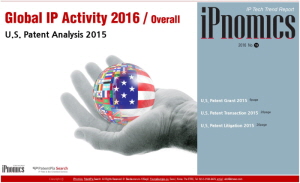Share the post "Pohang University of Science and Technology Officially Operates 4th Generation Synchrotron Radiation Accelerator"
South Korea has become the third country in the world to build and operate 4th generation synchrotron radiation accelerator that analyzes molecular structure by utilizing radiation beam that comes out from electrons that are accelerating at speed of light. This accelerator has the world’s best performance and is the only one to provide medium-energy X-ray energy.
Ministry of Science, ICP and Future Planning (MSIP) and Pohang University of Science and Technology (POSTECH, Chancellor Kim Do-yeon) announced that they finished preliminary testing and operation of 4th generation synchrotron radiation accelerator and have started helping researchers with using the equipment for their studies.
Synchrotron radiation accelerator analyzes atoms, molecules, and live cells by creating X-ray within a femto-second (one out of one trillion second). It has emerged as the nucleus of basic science as 20% of recent Nobel Prizes came from studies using an accelerator.
4th generation synchrotron radiation accelerator is 100 million times brighter and has 1,000 times better time resolution than current 3rd generation synchrotron radiation accelerator. World’s third 4th generation synchrotron radiation accelerator was built in South Korea in last September followed by the U.S., and Japan.
X-ray laser that is created by 4th generation synchrotron radiation accelerator has the world’s best degree of accuracy in time. Its average jitter value, which indicates level of stability of laser, is 25 femto-seconds. It is far better than average jitter values of 4th generation synchrotron radiation accelerators that are located in the U.S. (177 femto-seconds) and Japan (250 femto-seconds).
It is the only 4th generation synchrotron radiation accelerator to provide 2.1 to 3.0 keV medium-energy band X-ray laser.
This bandwidth includes silicon and germanium that are semiconductor materials and phosphorus, sulfur, chlorine, and fluorine that are necessary trace elements for human bodies and environmental substances. It is rapidly emerging as a major research field such as rare-earth metals for Smartphones and super conductors.
Pohang University of Science and Technology’s 4th generation synchrotron radiation accelerator (horizontal building on the left)
4th generation synchrotron radiation accelerator will first be used for 8 first-half projects out of 25 research projects that were received last February. First project will be ‘research on changes in molecular structure of water’ that will be co-carried out by South Korea and Sweden.
Because timing of molecular change of water is in a unit of femto-second, there are many areas that are still unknown. It is heard that related research can only be done after 4th generation synchrotron radiation accelerator is developed. It is expected that 4th generation synchrotron radiation accelerator will prove crystal structure of supercooled water which is still at a hypothesis stage.
South Korean Government is planning to select 7 research fields that can only be carried out by 4th generation synchrotron radiation accelerator and is planning to support them first. Currently there are only 3 4th generation synchrotron radiation accelerators, which is high-tech equipment in the world. It is difficult to carry out many tests at the same time and it is important to use it strategically since level of difficulty of tests is also high.
After building 3rd generation synchrotron radiation accelerator in 1994, about 5,000 people have used it every year. Along with operation of 4th generation synchrotron radiation accelerator, performance of synchrotron radiation accelerators has improved through addition of 2 beam lines to 3rd generation synchrotron radiation accelerator. By doing so, it is possible now to carry out research on infrared light spectroscopy, and micro macromolecule crystallography that could not be done in South Korea before.
“Not only synchrotron radiation accelerators can be used for basic science research but they can also be used for variety of fields such as development of new medicines, nano-materials, and semiconductors.” said Director General Bae Tae-min of MSIP Enormous Public Research Policy. “Because we also have 4th generation synchrotron radiation accelerator now, there will be outstanding and excellent results coming out from South Korea in the future.”
Staff Reporter Song, Junyoung | [email protected]
Share the post "Pohang University of Science and Technology Officially Operates 4th Generation Synchrotron Radiation Accelerator"



